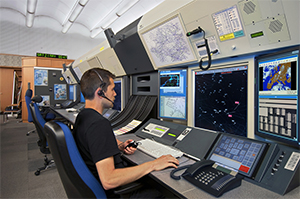
Fire Set at Aurora FAA Radar Center Deliberately Set, Causing hundreds of Delayed and Canceled Flights
Police say the fire was set by a contract employee and they do not consider it an act of terrorism
- By Matt Holden
- Sep 26, 2014
 A fire was set at an FAA radar center in Aurora, Illinois that grounded hundreds of Chicago flights. Police are sure in saying it is not a terrorist attack, and is instead an incident with a local contract employee.
A fire was set at an FAA radar center in Aurora, Illinois that grounded hundreds of Chicago flights. Police are sure in saying it is not a terrorist attack, and is instead an incident with a local contract employee.
The employee was found in the basement of the radar facility with self-inflicted wounds. The radar center was shut down and evacuated as the employee was taken to a hospital.
This activity caused a groundstop order halting all flights in and out of O’Hare and Midway airports. At 10 a.m., more than 700 flights were canceled and nearly 600 were delayed. The FAA halted all planes that were scheduled to cross the Midwest until 11 a.m. Passengers whose flights were canceled will be put on wait lists for later flights.
Emergency crews were called to the fire around 5:40 a.m., where they found a man with self-inflicted non-gunshot wounds. According to the FAA, the man is not an air traffic controller or manager.
Due to the fire, radio frequencies went dead and the air traffic control system immediately shifted to back-up equipment. Controllers at this center direct planes through the airspace and either hand off the air traffic to other similar facilities or direct the planes to terminal radar facilities, which direct planes to and from airport towers.
About the Author
Matt Holden is an Associate Content Editor for 1105 Media, Inc. He received his MFA and BA in journalism from Ball State University in Muncie, Indiana. He currently writes and edits for Occupational Health & Safety magazine, and Security Today.